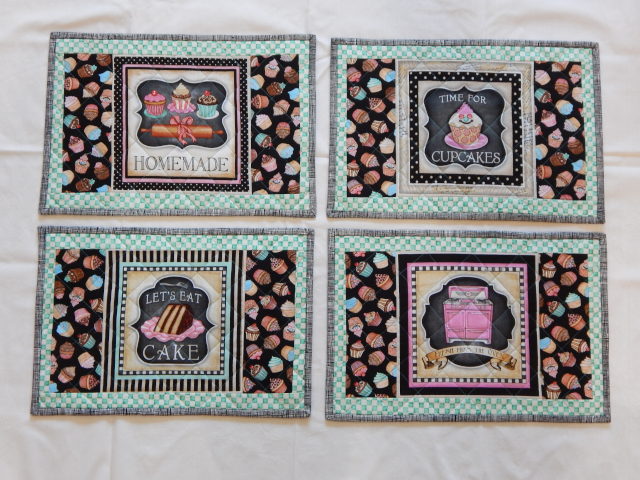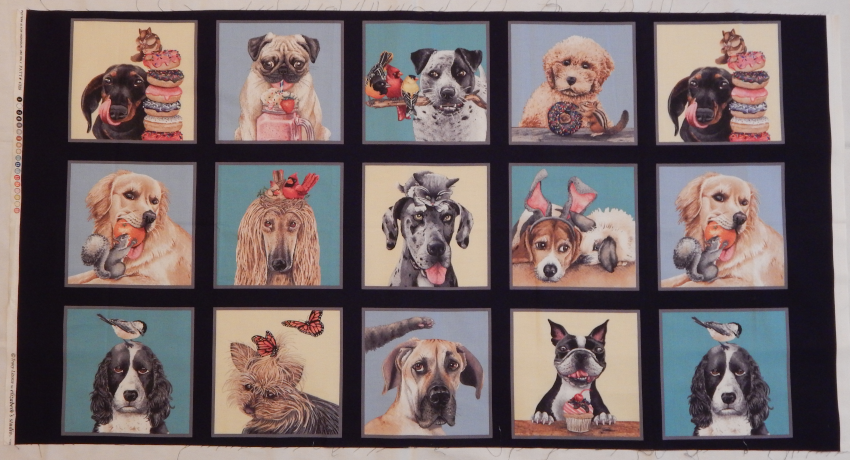Hello Everyone. It’s early November and I’m starting to think about the Thanksgiving menu (Bryne doesn’t like turkey) and (drum roll) fruitcake. About 10 years ago I was asked to make fruitcake to carry on a family traditional. Their Mom had always made it for their family and she passed away so two of her daughters asked me to try it. So still, every year I hunker down for a weekend and make like 8 loaves of their family recipe fruitcake. Then my friend takes it, soaks it in Brandy, and most of it gets mailed to her family for Christmas. I must say, I get the stigma surrounding fruitcake but made from scratch the stuff is good. I do enjoy baking and this is a labor of love. I usually bake over Thanksgiving but that’s late this year so I’m shooting for a week or two from now. Which might be good because then I can SEW SEW SEW over the Holiday weekend!!! So many projects, so little time…
Enough of me rambling on, let’s talk about panels! Those glorious pre-printed little bundles of inspiration for creating so many great things. I’m not one to seek them out, but when I’m shopping if something catches my eye and I can’t live without it, it will come home with me. What’s nice about finding these panels is there’s usually coordinating fabrics displayed with it. Fabric designers who put panels together will always do a coordinating line. Right there in the store I will think up something that seems good and grab the fabric I need right away. I like to do smaller projects with panels, like placemat sets and table runners so I can determine yardage easily.
Below you can see a set of placemats with a fun baking theme. This was a panel of eight blocks (they are in my Etsy shop sold as two sets of four). I cut the blocks apart and added fabrics around them to achieve the desired size. I was lucky enough to find the perfect fabric for the back and a nice binding fabric that coordinated perfectly.
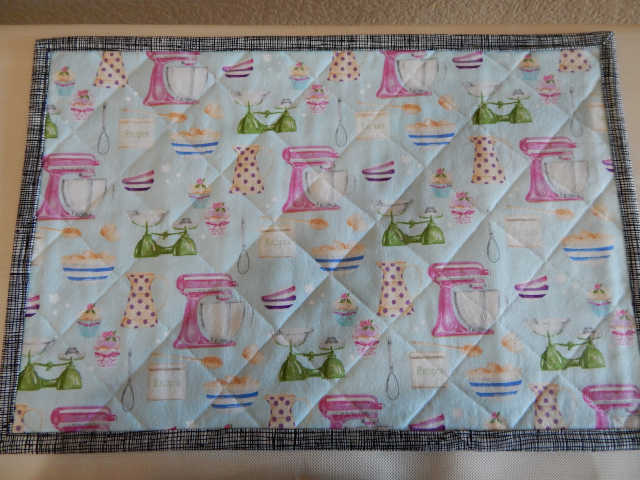
Below you can see a work in progress; this will be two more sets of placemats, 6 each. This started as a panel of 12 blocks, again, cut apart and “framed” so to speak. At first I laid out the design and realized it lacked definition. I added the narrow burgundy or yellow border and t made all the difference. Right now I’m quilting these with a crosshatch pattern.
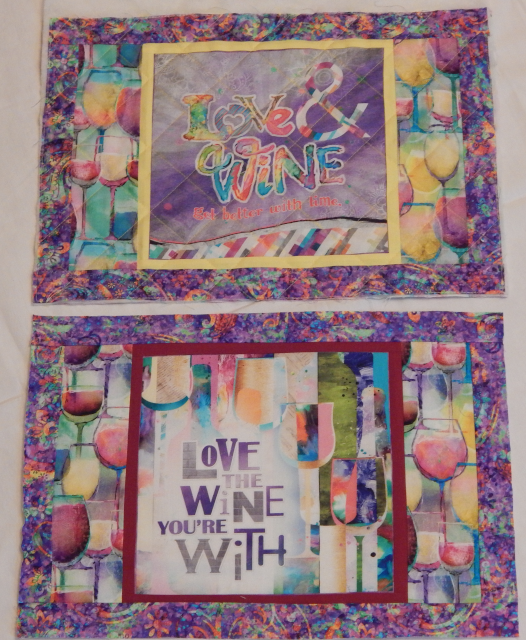
I have seen two types of panels; the type I’ve been speaking of, a collection of (usually) block style pictures, and the second, a large single picture. Examples are below.
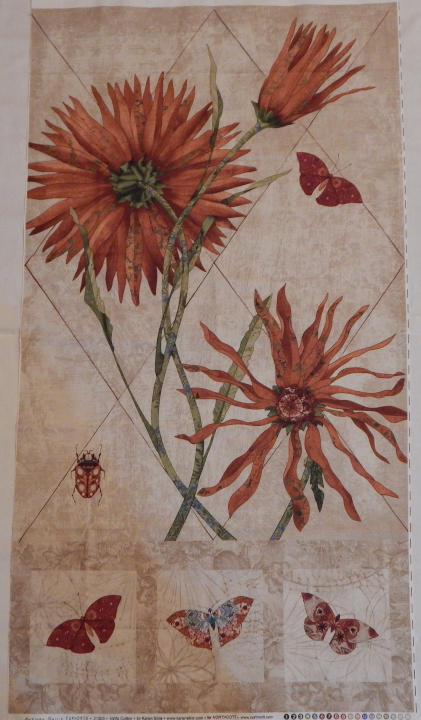
Instead of placemats, you could take the blocks from a panel and make a table runner. The blocks can be rearranged into a quilt or wallhanging. They can be made into pillows. The cute dog panel above will become a king size quilt for my bed- protection from my dogs!
The panel that is a larger single picture can start as a great centerpiece for a wallhanging or quilt. Construct blocks to frame the picture, then add outer borders. This is a creative and common use for this style panel.
Another idea for this panel, and actually what I thought I’d like to experiment with, is making a “stained glass” panel out of it. Perhaps you’ve seen this creation. The panel is cut up into narrower “slices” and narrow, dark, solid sashing strips are sewn in between the pieces. Some quilts I’ve seen have offset the pieces as well causing a slightly “fractured” feel.
I found this flower panel while shopping at quilt stores in Gardnerville with friends one Saturday. I’m drawn to fall colors and the vertical background lines struck me as a panel that might look good fractured. I see the butterfly border on the bottom, not sure what that might become. And, as I was just looking at it I noticed the blue in the stem- what an interesting color to incorporate elsewhere? Hmmm.
I found this adorable baby animal panel and coordinating fabrics about a year ago. I plan to cut the panel up and morph it into a quilt. I might try to do a twin size, the panel is pretty big.
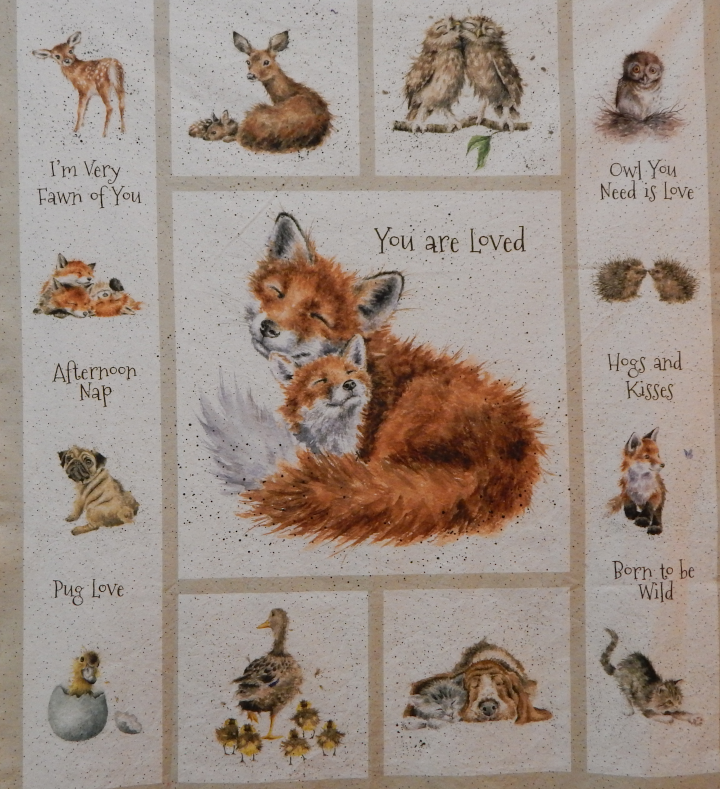
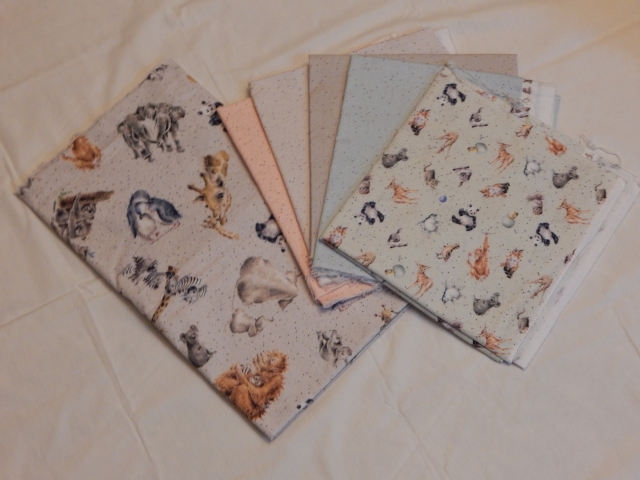
So as you can see, panels can be great inspiration and a quick starting point for what could be a less involved project. Great gift ideas too. My advice is to purchase coordinating fabrics if possible and cost-effective. If the project sits for awhile you don’t have to try to find other coordinating fabrics later (been there, have been disappointed).
